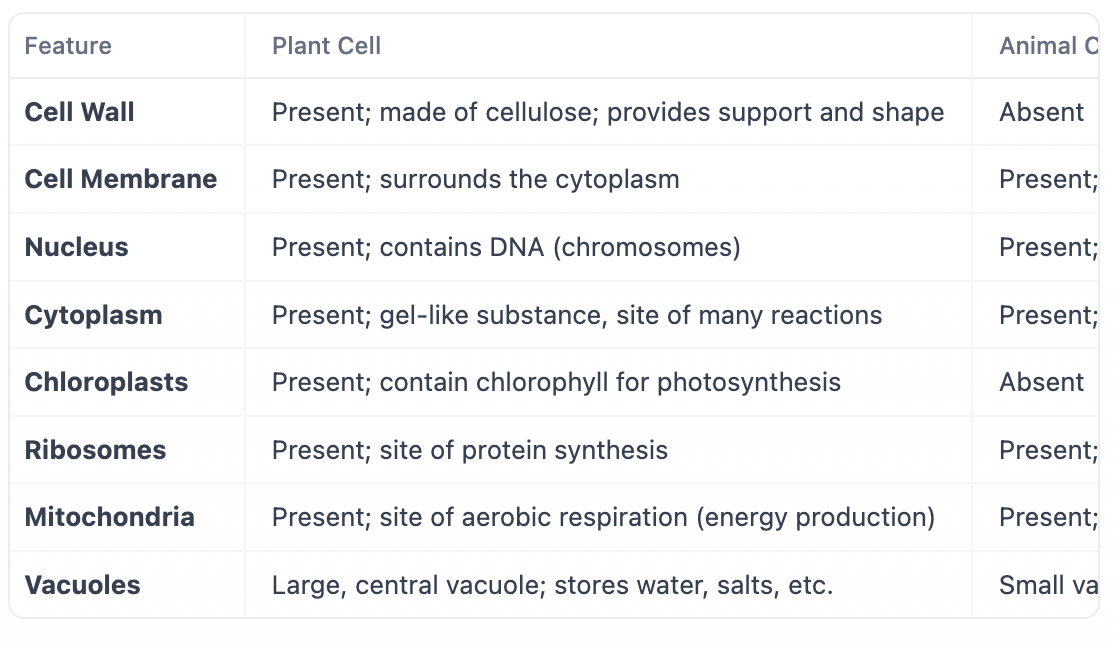TOPIC 2 - Organisation of the organism
1/14
There's no tags or description
Looks like no tags are added yet.
Name | Mastery | Learn | Test | Matching | Spaced |
|---|
No study sessions yet.
15 Terms
define cell
The basic unit of life.
define tissue
A group of similar cells that perform a specific function (e.g., muscle tissue).
define organ
A structure made up of different tissues working together to perform a specific function (e.g., the stomach).
define organsystem
A group of organs that work together to perform a major function (e.g., the digestive system).
define organism
A complete living thing, composed of multiple organ systems.
function of red blood cells
transport oxygen via bloodstream
Sperm and egg cells (gametes) functionn
reproduction
Neurones (nerve cells) fucntion
Conduction of electrical impulses (nervous system).
Palisade mesophyll cells fucntion
conduct phtoodyntheise
root hair cell fucntion
Absorption of water and mineral ions from the soil (plant roots).
cilated cells function
Movement of mucus in the trachea and bronchi (respiratory system).
how are new cells produced
new cells are produced by division of existing cells

Functions of Cell Structures:
Structure Function
Cell Wall Provides support, shape, and protection (plant and bacterial cells).
Cell Membrane Controls what enters and exits the cell; maintains cell's internal environment.
Nucleus Contains the cell's genetic material (DNA), controls cell activities.
Cytoplasm Where chemical reactions occur; contains organelles (in eukaryotic cells).
Chloroplasts Site of photosynthesis (converting light energy to chemical energy) (plant cells).
Ribosomes Site of protein synthesis (making proteins).
Mitochondria Site of aerobic respiration (producing energy in the form of ATP).
Vacuoles Storage of water, nutrients, waste products, etc. (plant cells have a large central vacuole).
Circular DNA Contains the genetic information in bacteria.
Plasmids Carry extra genes, like those for antibiotic resistance, in bacteria.
Describe and compare the structure of a plant cell with an animal cell, limited
to: cell wall, cell membrane, nucleus, cytoplasm, chloroplasts, ribosomes,
mitochondria, vacuoles

Structure of a Bacterial Cell:
Feature Description
Cell Wall Present; made of peptidoglycan; provides support and shape
Cell Membrane Present; surrounds the cytoplasm
Cytoplasm Present; gel-like substance, site of many reactions
Ribosomes Present; smaller than eukaryotic ribosomes; site of protein synthesis
Circular DNA Present; the genetic material; not enclosed in a nucleus (nucleoid region)
Plasmids Present; small, circular DNA molecules; contain extra genes (e.g., antibiotic resistance)